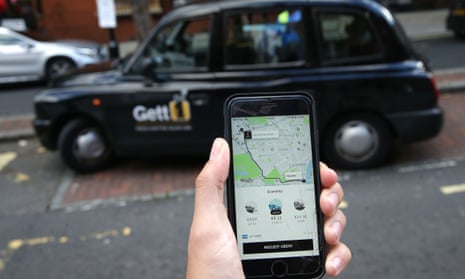Dara Khosrowshahi became chief executive of Uber because his predecessor, Travis Kalanick, had become a liability. Uber’s private equity backers knew there was little hope of getting the taxi service firm’s shares listed on a stock market while Kalanick was at the helm, annoying regulators and inflaming every dispute that crossed his desk. Khosrowshahi, fresh out of Expedia, would be the antidote to the co-founder’s aggression.
It should be no surprise, then, that the new man has adopted a gentler tone in response to Transport for London’s decision last week not to renew Uber’s licence. “On behalf of everyone at Uber globally,” declared Khosrowshahi on Monday, “I apologise for the mistakes we’ve made.”
What mistakes was he referring to? He didn’t say, which makes it impossible to tell which of TfL’s four complaints he regards as a fair cop and which (if any) he thinks are groundless. But he was clear that Uber will be appealing against the ban anyway.
To many minds, this vague “apology” will be seen as a welcome first step in defusing the affair before Uber’s cars disappear from London’s roads. That is probably how the story will end, but it is hard to understand why Sadiq Khan, who backed TfL vigorously on Friday, already seems to be running towards compromise. The mayor welcomed the apology and said he had asked TfL to meet Khosrowshahi. Why?
TfL’s charges against Uber are all serious, ranging from failures to report criminal offences to being less than transparent about the use of a “Greyball” software programme that may deceive regulators. If Khosrowshahi had addressed those points directly, and made specific binding commitments, there might a case for Khan to offer an olive branch. But Uber didn’t do that.
Khan is in the strange position of complaining about Uber’s strong-arm PR tactics while seemingly taking some content-free warbling about “humility, integrity and passion” seriously. Bizarre.
Bank needs to admit role in soaring debt
The Bank of England has left it late to start worrying about surging levels of unsecured consumer debt, but there’s a whiff of panic in the air now.
At the end of June, Threadneedle Street told lenders to start amassing £11.4bn of extra capital in the next 18 months to protect the financial system from the 10% rise in consumer lending over the past year. The following month Alex Brazier, the Bank’s director of financial stability, spoke about a “spiral of complacency” with lenders assuming low levels of default can continue forever.
Now comes another a second intervention on capital within just three months. Lenders will have to find another £10bn on top to protect against the risk of £30bn of losses during a nasty recession. The net effect for consumers is that getting an unsecured loan, or extending a credit card facility, is likely to become harder or more expensive, or both.
The Bank is at pains to point out that the rapid growth of consumer credit amounts to only “a pocket of risk” within “a benign overall domestic credit environment”. Well, maybe, but the Bank is also oddly reticent about acknowledging its own role in this build-up of debt.
In cut interest rates to 0.25% in August last year and introduced a £100bn facility for banks called the Term Funding Scheme to ensure the cheaper money reached households and businesses. Those actions were designed to ease the economy over humps created by the vote for Brexit.
Maybe the policy worked, in the sense that consumers kept on spending, but surely the moment to issue stark warnings about the long-term dangers of lax lending standards was when even-cheaper money was being pumped into the system. If there is a spiral of complacency, the Bank was part of it, say its critics. It’s a fair point.
Who will pay the price of PFI?
The PFI wheeze was always a Pretty Farcical Idea, as the old gag had it, and as any number of studies over the years have concluded. Try a sober Treasury select committee report from 2011: “The out-turn costs of construction and service provision are broadly similar between PFI and traditional procured projects, although in some areas PFI seems to perform more poorly.”
So you can’t blame John McDonell for wondering whether past wrongs can be righted, even if it was always New Labour that was most obsessed by PFI. The shadow chancellor pledged to bring existing PFI contracts “back in-house”.
If he’s serious, there is a simple way to proceed, as described in the same select committee report: “The most straightforward way of dealing with current PFI contracts is for the government to buy up the debt (and possibly also the equity) once the construction stage is over ... Although government debt levels would be higher the public finances would not be any less sustainable. This is because it would become more affordable to service the visible government debt rather than the hidden PFI debt.”
It could be done, in other words. The critical political detail, however, is the price the government would pay. Saying, as Labour did, that “parliament will assess the appropriate level of compensation” is hopelessly vague. Without that detail, the policy is impossible to assess meaningfully. If the idea is to pay less than the market price, remember that not every owner of a PFI asset is an offshore hedge fund. Some are our pension funds.

